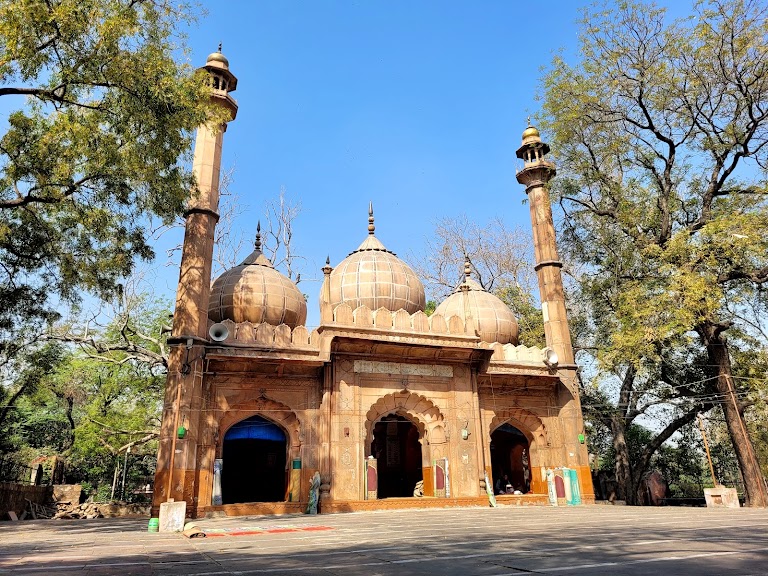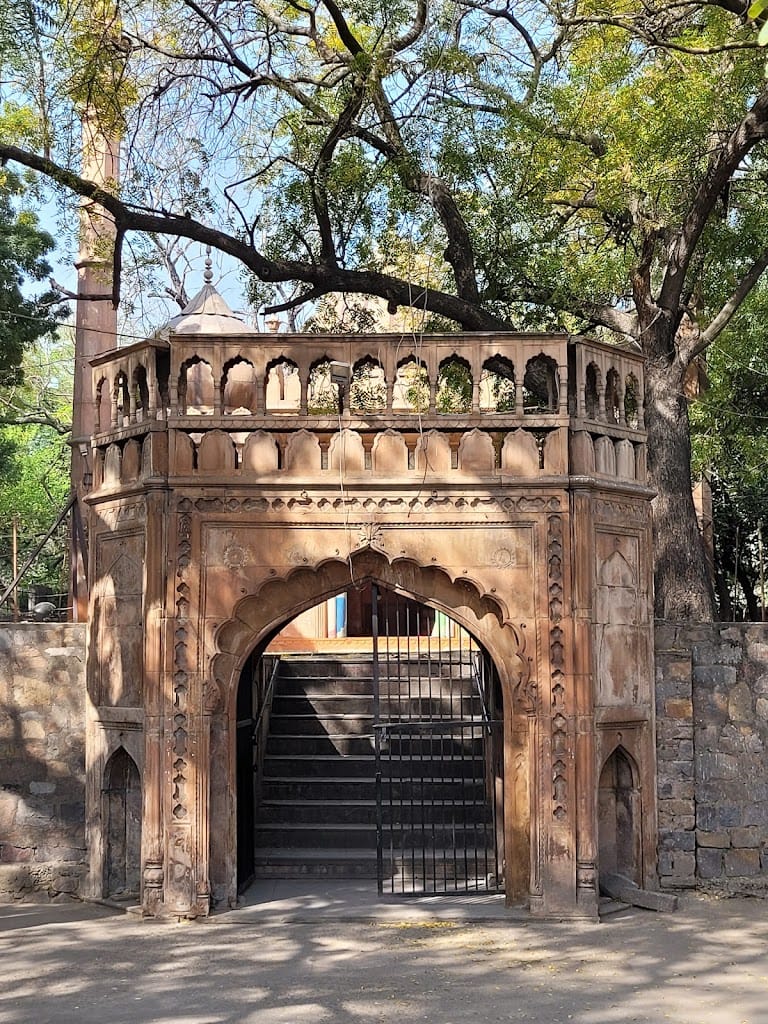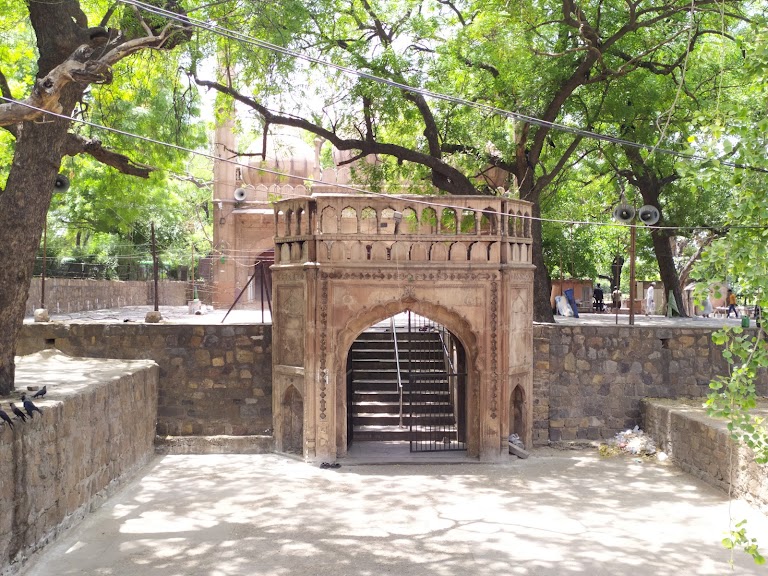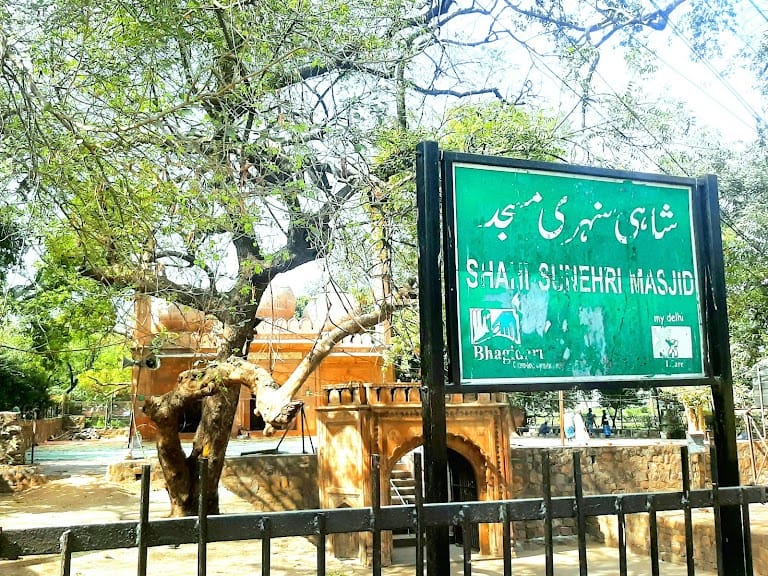



Shahi Sunehri Masjid, also known as Sunehri Masjid, is a mosque located near the Red Fort, on Netaji Subhash Marg in Old Delhi. This mosque is distinct from another mosque of the same name near Chandni Chowk. Key Information: Established: The mosque was built in 1721 CE during the reign of Mughal Emperor Muhammad Shah (1719–1748). Founder: It was constructed by Rohilla chief Nawab Qudsiya Begum, also known as Nawab Bahadur Javed Khan, who was an influential noble during that period. Architectural Style: Mughal architecture, characterized by its elegant and ornate design. Name Meaning: "Sunehri" means "golden" in Hindi, and the mosque is named after the golden domes that once adorned its roof. Structure: The mosque has three golden domes (now faded) and a prayer hall. It was smaller than some of the grander Mughal mosques, but its distinctive gilded appearance made it stand out. Historical Significance: The Shahi Sunehri Masjid has an important place in Indian history, especially during the Indian Rebellion of 1857. It was from here that the religious leader Shah Abdul Aziz issued a fatwa against British rule. The mosque’s proximity to the Red Fort makes it a symbol of the Mughal period's grandeur and decline.